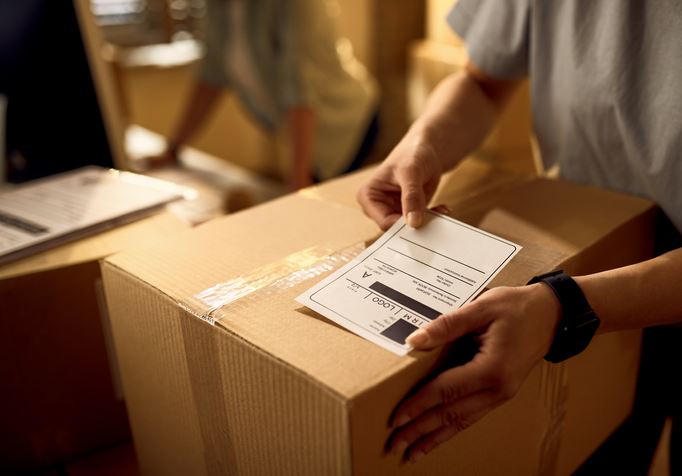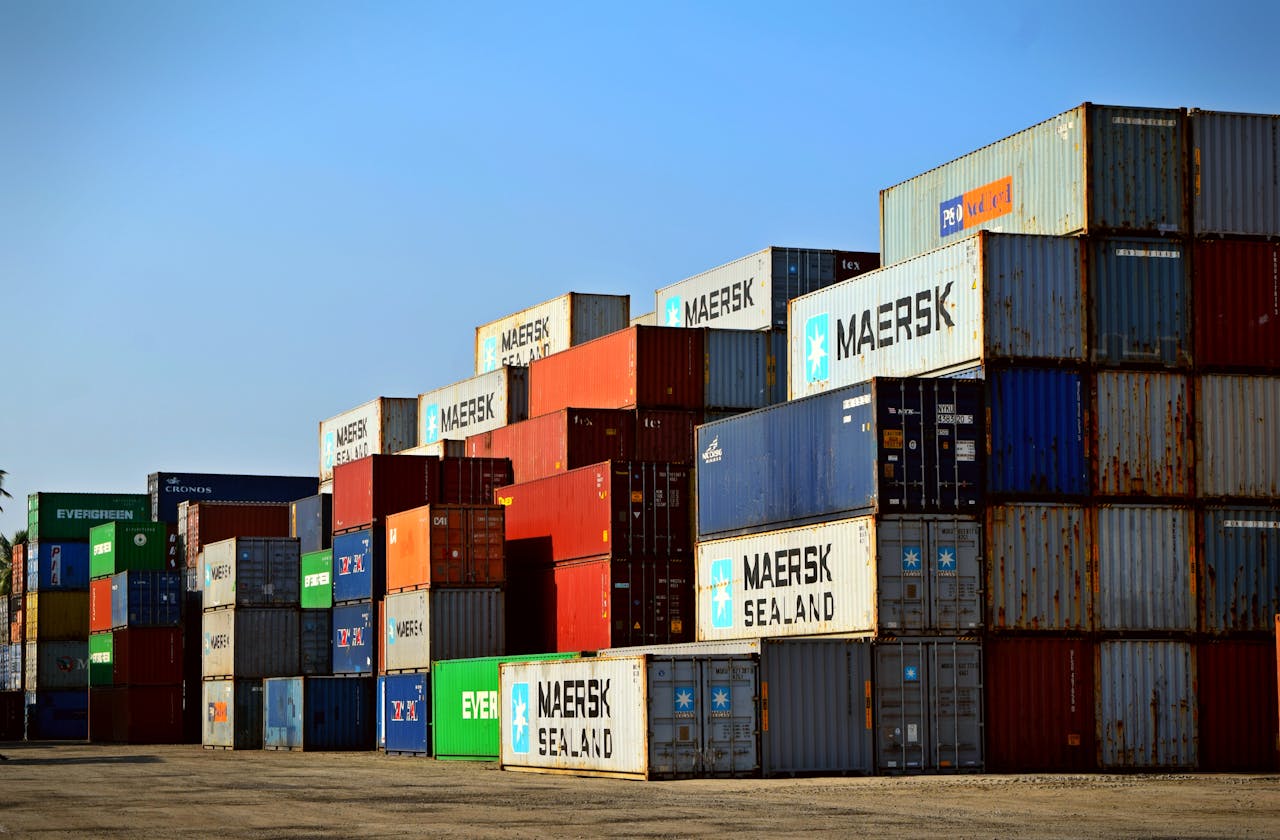Shipping labels, those stickers that are often overlooked, play a pivotal role in the seamless journey of your packages. From the moment they’re affixed to the box to their final delivery, shipping labels guide your shipment through the complex network of the shipping carrier. In this blog post, we’ll delve into the best practices for creating shipping labels that guarantee efficient delivery.
In this comprehensive guide, we will unravel the secrets of creating shipping labels that are not just functional, but also efficient and effective. We’ll delve into the intricacies of label design, printing, and placement, offering actionable tips and best practices to optimize your shipping process.
Whether you are an online retailer, a small business owner, or an individual shipping a package, this guide will equip you with the knowledge to create shipping labels that are as reliable as they are professional.
Why Shipping Labels Matter
Shipping labels, though often overlooked, are the unsung heroes of efficient delivery. They are the silent navigators, guiding your packages through the complex network of shipping carriers. A well-designed and accurate shipping label can significantly impact the efficiency and success of your shipping operations. Let’s now see why shipping labels matter:
Accurate and Timely Delivery:
A clear and accurate shipping label ensures that your package reaches its destination on time. It provides essential information to shipping carriers, such as the sender’s and recipient’s addresses, tracking numbers, and special handling instructions. This information is crucial for sorting, routing, and delivering packages efficiently.
Reduced Errors and Delays:
A poorly designed or inaccurate shipping label can lead to a variety of problems, including delayed deliveries, lost packages, and incorrect deliveries. By following best practices for creating shipping labels, you can minimize errors and delays, ensuring a smoother shipping process.
Enhanced Customer Satisfaction:
Customers expect their packages to arrive on time and in good condition. A well-designed shipping label contributes to a positive customer experience by ensuring that their packages are handled correctly and delivered promptly. Timely and accurate deliveries can lead to increased customer satisfaction and loyalty.
Improved Shipping Efficiency:
A clear and legible shipping label can speed up the sorting and processing of packages at shipping facilities. This can improve overall shipping efficiency and reduce costs for both businesses and consumers.
Enhanced Brand Image:
Your shipping labels are an extension of your brand. A professional and well-designed label can enhance your brand image and create a positive impression on your customers. By using high-quality labels and incorporating your brand’s logo and colors, you can reinforce your brand identity and build trust with your customers.
Enhanced Security and Tracking:
Shipping labels often include barcodes and QR codes that allow shipping carriers to track your package throughout its journey. This tracking information provides valuable insights into the shipment’s location and estimated delivery time. Additionally, it helps to prevent theft and loss by enabling real-time monitoring and security measures.
Compliance with Shipping Regulations:
Many shipping carriers have specific requirements for shipping labels, including size, format, and content. By adhering to these regulations, you can avoid delays, penalties, and other issues that may arise from non-compliance.
Simplified Returns Process:
Clear and accurate shipping labels can streamline the returns process. If a customer needs to return a package, a well-designed return label can provide the necessary information to facilitate a smooth and efficient return.
By understanding the importance of shipping labels and implementing best practices, you can optimize your shipping operations, reduce costs, and improve customer satisfaction.
Best Practices for Creating Shipping Labels
To ensure efficient and accurate delivery, consider these best practices when creating shipping labels:
-
Use High-Quality Printing Materials:
The quality of your shipping labels significantly impacts the efficiency and accuracy of the delivery process. Investing in high-quality printing materials is crucial to ensure that your labels are durable, legible, and easily scannable.
Key considerations for high-quality printing materials:
Durable Labels:
- Waterproof Labels: These labels are resistant to water damage, making them ideal for shipments exposed to rain or humidity.
- Thermal Labels: These labels are heat-sensitive and can be printed quickly and easily. However, they may fade over time, especially when exposed to direct sunlight.
- Direct Thermal Labels: These labels are similar to thermal labels but do not require a thermal transfer ribbon. They are often used for short-term applications.
Clear and Legible Fonts:
- Font Size: Choose a font size that is easy to read from a distance. Avoid using fonts that are too small or too ornate.
- Font Style: Opt for a clear and simple font style, such as Arial or Times New Roman. Avoid using cursive or decorative fonts that can be difficult to read.
High-Resolution Printing:
- Sharp Barcodes: A high-resolution printer ensures that barcodes are clear and easily scannable, reducing the risk of delivery delays.
- Detailed Text: High-resolution printing also improves the readability of text on the label, especially for smaller font sizes.
By carefully selecting high-quality printing materials, you can create shipping labels that are both durable and visually appealing, enhancing the overall shipping experience.
-
Accurate and Complete Information:
Accurate and complete information on shipping labels is the cornerstone of successful shipping. It ensures that packages reach their intended destination promptly and efficiently.
Key elements to include on your shipping label:
Sender’s Address:
- Name: Clearly print the sender’s name.
- Street Address: Include the street address, including house or apartment number.
- City, State, ZIP Code: Provide the city, state, and ZIP code.
- Country: Specify the country if shipping internationally.
Recipient’s Address:
- Name: Clearly print the recipient’s name.
- Street Address: Include the street address, including house or apartment number.
- City, State, ZIP Code: Provide the city, state, and ZIP code.
- Country: Specify the country if shipping internationally.
Contact Information:
- Phone Number: Include a phone number where the sender or recipient can be reached.
- Email Address: Provide an email address for additional communication.
Special Instructions:
- Handling Instructions: If the package requires special handling, such as “Fragile” or “Perishable,” clearly indicate these instructions.
- Delivery Instructions: Specify any specific delivery instructions, such as “Leave at Door” or “Signature Required.”
Tips for Accurate Information:
- Double-Check: Always double-check all information on the label to avoid errors.
- Use Clear and Concise Language: Avoid using abbreviations or jargon that may be misunderstood.
- Print Legibly: Ensure that all information is printed clearly and legibly.
- Verify Address: Use a reliable address verification service to ensure accuracy.
By providing accurate and complete information on your shipping labels, you can minimize delays, prevent wrong deliveries, and enhance the overall shipping experience.
-
Proper Label Placement:
The placement of your shipping label is crucial for efficient handling and delivery. A well-placed label can prevent delays and wrong deliveries, ensuring a smooth journey for your package.
Best practices for label placement:
- Center Placement: Place the label in the center of the largest side of the package. This ensures maximum visibility and easy scanning.
- Avoid Obstructions: Make sure the label is not covered by other packaging materials, stickers, or tape.
- Secure Adhesion: Use a strong adhesive to firmly attach the label to the package. Avoid placing the label on seams or edges where it may peel off.
- Multiple Packages: If you’re shipping multiple packages, assign a unique label to each package. This helps to identify and track each package individually.
- Non-Standard Packages: For non-standard packages, such as cylindrical or irregularly shaped items, place the label on the flattest side or wrap it around the package securely.
By following these guidelines, you can ensure that your shipping labels are properly placed, leading to efficient handling and timely delivery.
-
High-Quality Barcodes:
Barcodes are the silent workhorses of the shipping industry, enabling efficient tracking and sorting of packages. A high-quality barcode is essential for accurate scanning and timely delivery.
Key considerations for high-quality barcodes:
- Clarity and Legibility: Ensure that the barcode is clear, sharp, and free of smudges or damage.
- Correct Barcode Type: Use the appropriate barcode type for your shipping carrier. Common barcode types include UPC, EAN, and USPS.
- Proper Barcode Size: The barcode should be large enough to be easily scanned by automated systems.
- Optimal Placement: Place the barcode in a clear, unobstructed area of the label. Avoid placing it near the edges or folds of the package.
- Barcode Scanner Compatibility: Consider the types of barcode scanners used by your shipping carrier and ensure compatibility with your barcode format.
Tips for High-Quality Barcodes:
- Use High-Quality Printing Equipment: A high-quality printer will produce clear and sharp barcodes.
- Avoid Overprinting: Overprinting can obscure the barcode and make it difficult to scan.
- Protect the Barcode: If possible, cover the barcode with clear packaging tape to protect it from damage.
By following these guidelines, you can ensure that your barcodes are of high quality, leading to efficient scanning and tracking of your packages.
-
Customizable Shipping Labels:
Customizable shipping labels offer a unique opportunity to enhance your brand image, promote special offers, and provide additional information to your customers.
Benefits of Customizable Shipping Labels:
- Brand Recognition: Incorporate your company logo, colors, and fonts into your labels to reinforce your brand identity.
- Marketing Opportunities: Use labels to promote special offers, discounts, or upcoming promotions.
- Customer Engagement: Add personalized messages or thank-you notes to create a more personal touch.
- Clear Instructions: Include specific instructions for handling or delivery, such as “Fragile” or “Perishable.”
- Return Information: Provide clear return instructions on the label to simplify the returns process.
Tips for Effective Customization:
- Keep it Simple: Avoid cluttering your label with too much information.
- Prioritize Clarity: Ensure that all text and graphics are easy to read.
- Choose the Right Materials: Select durable materials that can withstand the shipping process.
- Use High-Quality Printing: Invest in high-quality printing to create professional-looking labels.
- Test Your Design: Before mass production, test your labels to ensure they are effective and visually appealing.
By customizing your shipping labels, you can elevate your brand, improve customer satisfaction, and streamline the shipping process.
-
Utilize Shipping Label Software:
Shipping label software can significantly streamline your shipping process, saving you time and reducing errors. By automating various tasks, such as address verification, barcode generation, and label printing, you can improve efficiency and accuracy.
Key benefits of using shipping label software:
- Time-Saving: Automate repetitive tasks, such as manually entering addresses and generating labels.
- Reduced Errors: Minimize human error by using software to verify addresses and generate accurate labels.
- Cost-Effective: Many shipping label software solutions offer affordable pricing plans.
- Integration with Shipping Carriers: Easily integrate with popular shipping carriers to access discounted rates and streamline the shipping process.
- Customizable Templates: Create custom templates for your labels, including your company logo, address, and return address.
- Batch Printing: Print multiple labels at once to save time and effort.
Popular Shipping Label Software Options:
- ShipStation: A comprehensive shipping solution that offers features like batch printing, automated order import, and advanced analytics.
- Shippo: A user-friendly platform that integrates with multiple carriers and provides real-time shipping rates.
- Pitney Bowes Shipping: A robust solution for businesses of all sizes, offering features like address verification, customs clearance, and package tracking.
By leveraging shipping label software, you can optimize your shipping operations, reduce costs, and enhance customer satisfaction.
Conclusion
By following these best practices, you can create shipping labels that are not only accurate and efficient but also professional and visually appealing. This will help ensure that your packages reach their destination on time and in perfect condition. Remember, a well-designed shipping label is a small investment that can yield significant returns in terms of customer satisfaction and business reputation.


